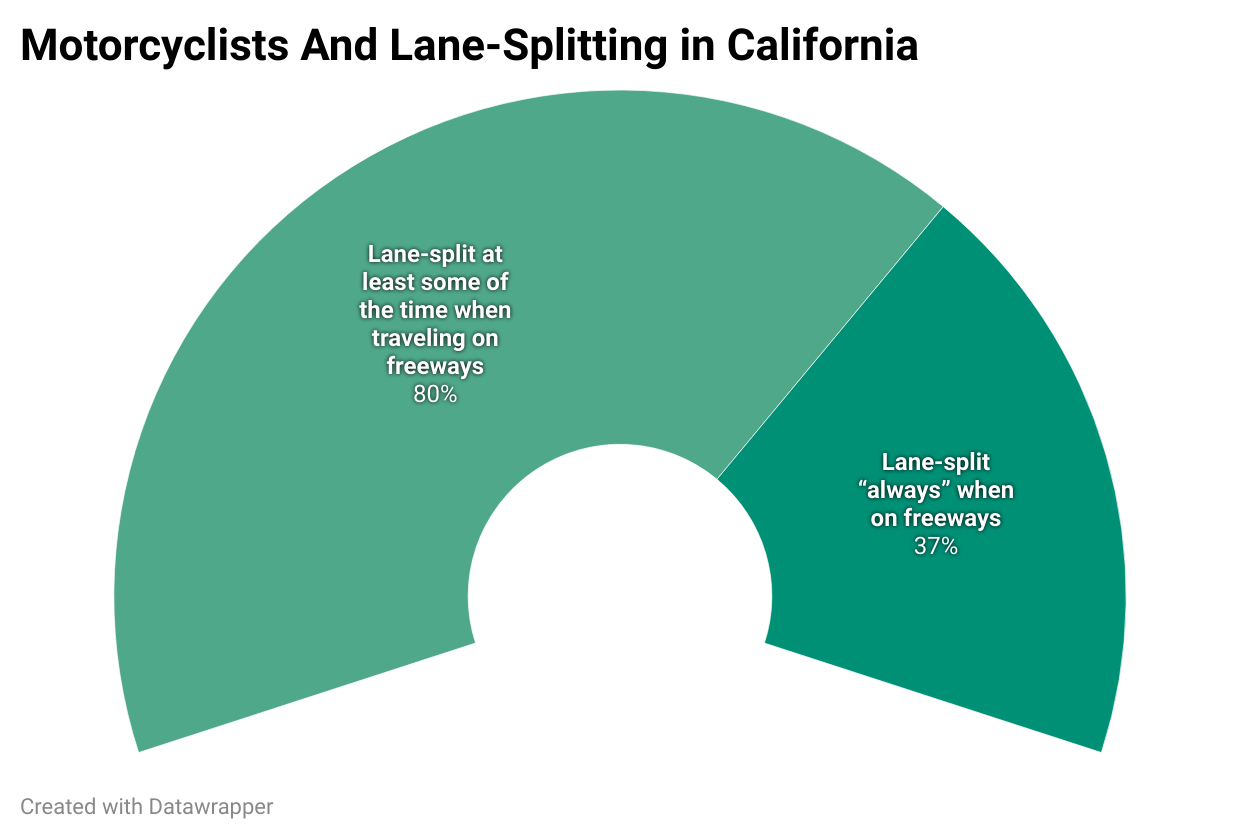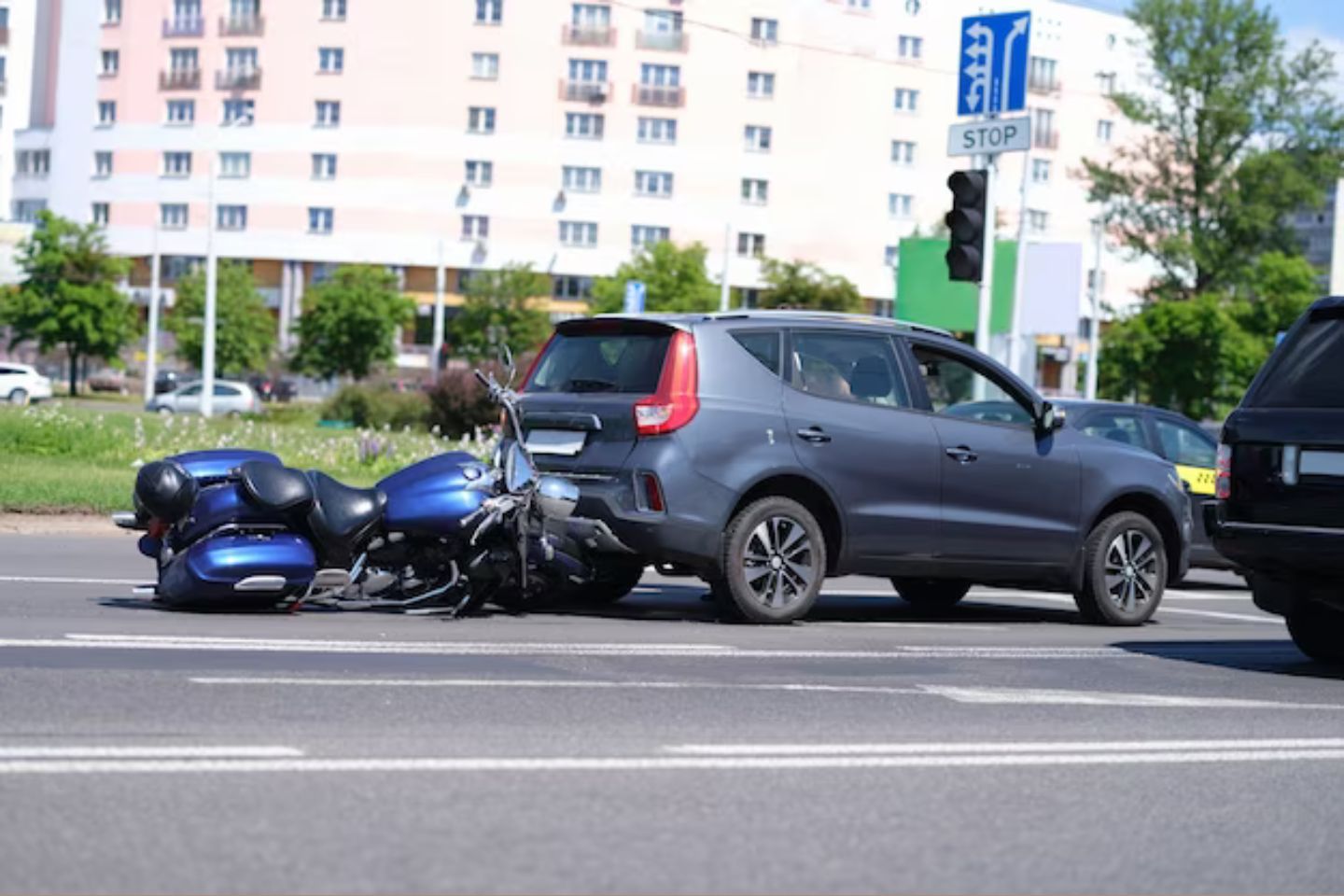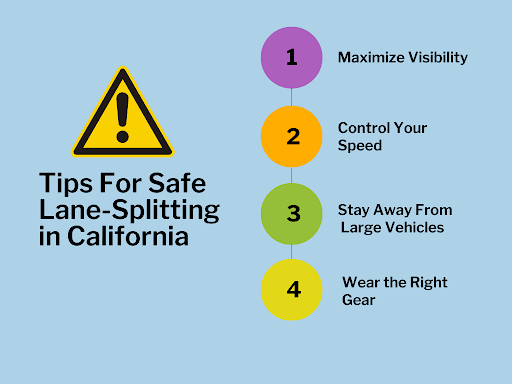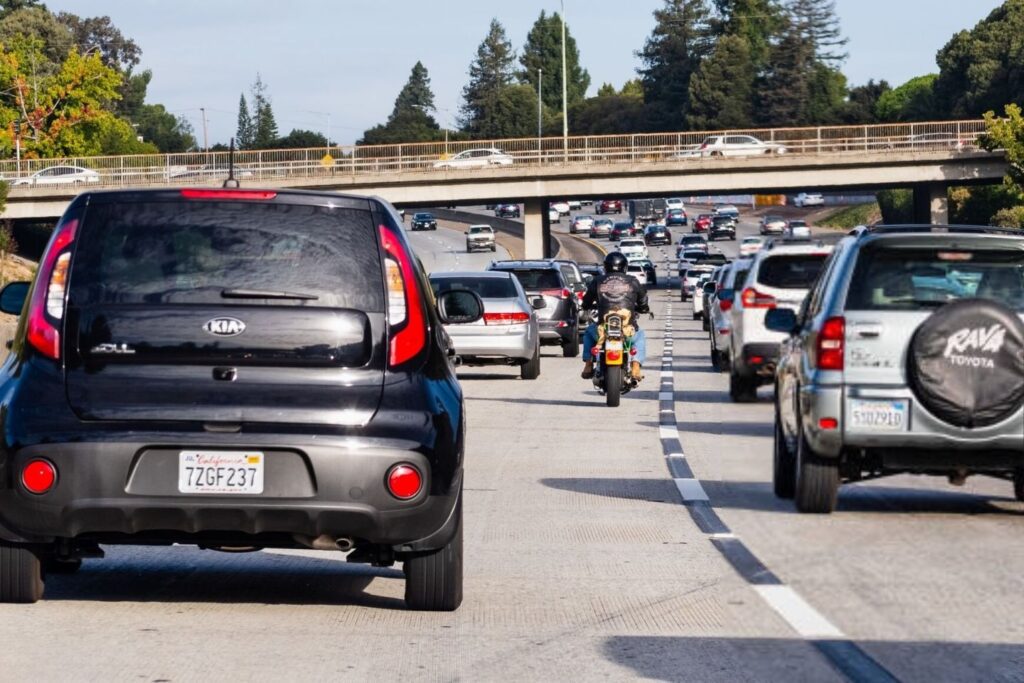California stands out as one of the few states that allow lane splitting, a practice where motorcyclists navigate between two lanes of traffic. Lane splitting, when executed properly, not only offers a safer riding experience but also helps with traffic congestion. However, motorcyclists who engage in lane splitting at excessive speeds or under unsafe circumstances face increased risks.
A study by UC Berkeley highlights the patterns and popularity of lane splitting in California, expressing its benefits and the importance of conducting it safely. Given the potential dangers associated with improper lane splitting, California has established specific lane-splitting laws.
This article aims to provide a comprehensive overview of California lane-splitting laws. It will guide you through the legal framework and offer advice on steps to take if you’re involved in a motorcycle accident related to lane splitting.


What is Lane-Splitting?
Lane splitting, or lane sharing, allows motorcyclists in California to navigate between lanes of slow-moving or stationary traffic on highways with multiple lanes going in the same direction. This practice is legal and can reduce traffic congestion and accidents if done properly.
However, it requires careful execution to avoid risks, especially for inexperienced riders, as the danger increases with speed. Unlike lane sharing, where motorcycles ride side by side, lane splitting involves moving along the dotted lines between lanes, minimizing space usage, and maintaining distance from other vehicles.
While lane splitting is legally recognized, it’s not universally accepted by all drivers, emphasizing the need for awareness and careful adherence to California lane-splitting laws to ensure safety on the roads.
What Are California Lane-Splitting Laws?
California’s Vehicle Code Section 21658.1 defines lane splitting as the act of riding a motorcycle, with both wheels on the ground, between vehicles that are either moving or stationary in the same lane.
This practice is recognized by law in California and comes with specific regulations to ensure safety on the road.
Some of the key aspects of lane-splitting laws in the state include:
- Speed Management: Keep your speed no more than 10-15 mph faster than the surrounding vehicles to minimize accident risks.
- Road Types: Lane splitting is permitted on all road types, including:
- Divided highways
- Undivided streets
- Highways.
- Environmental Consideration: Before lane splitting, evaluate the environment, considering factors like lane widths, traffic flow, and the presence of large vehicles that might not see you easily.
- Weather and Road Conditions: Avoid lane splitting in poor weather conditions, during times of bad lighting, or on roads that are in poor condition.
- Preferred Lanes for Splitting: Focus on splitting lanes between the far-left lanes rather than between other lanes.
- Legal Restrictions: Do not ride on the shoulder of the road, as it is illegal.
- Safety Gear: Wear bright-colored or reflective protective gear to increase visibility.
If you’ve suffered a personal injury due to lane-splitting in California, The Personal Injury Center is your go-to resource. We specialize in connecting you with skilled legal professionals in your locality, ensuring you have the expert guidance necessary to navigate your legal situation effectively.
Risks of Lane-Splitting in California
Both motorcyclists and drivers in California need to understand the risks associated with lane splitting to enable safer driving habits and reduce accidents. Being aware of the dangers can lead to more cautious behavior on the roads.
Some of the risks surrounding lane-splitting are:
- Narrow Spaces and Reaction Time: The narrow gap between lanes significantly limits motorcyclists’ room to move and shortens the time they have to respond to sudden changes in traffic. An unexpected lane change by a car, for example, can lead to an immediate collision.
- Blind Spot Dangers: While lane splitting, motorcyclists frequently end up in the blind spots of vehicles. This reduces the chance of drivers seeing them in time to avoid an accident, especially when making lane changes or turns.
- The Danger of Opening Car Doors: Motorcyclists moving between slow or stopped traffic face the threat of suddenly opened car doors. This leaves them with little time to react, potentially leading to accidents.
- The Challenge of Speed Differences: A significant speed difference between a lane-splitting motorcyclist and other vehicles raises the risk of accidents. When motorcyclists move much faster than the traffic flow, it increases the chance of a collision.
What to Do Following a Lane-Splitting Accident in California


If you’re involved in a lane-splitting accident in California, it’s essential to take certain steps to safeguard yourself and your rights. Follow this straightforward guide to navigate the situation effectively:
- Ensure Safety: Immediately prioritize your safety and that of anyone else involved. If it’s safe to do so, move to a secure location and check for injuries. Call 911 if medical assistance is needed.
- Report the Accident: Contact the police to report the incident. A police report is crucial for insurance claims and any legal matters that may arise.
- Document Everything: Collect and preserve all relevant documents, such as the police report, medical bills, and repair estimates for your motorcycle. These documents are vital for insurance claims and potential legal actions.
- Contact Your Insurance: Inform your insurance company about the accident promptly. Provide accurate information and be honest about the incident.
- Be Mindful with Statements: Be cautious when making statements, particularly to insurance adjusters or representatives from the other party involved. It’s advisable to speak with your attorney before giving any formal statements.
- Seek Legal Advice: Consider consulting with a lawyer who specializes in motorcycle accidents and California lane-splitting laws.
The Personal Injury Center can assist you if you’re looking for legal representation in California. We help you find skilled lawyers near you who can explain your rights and guide you through the process of making a claim.
Why is Lane Splitting Legal in California?


California stands out as the only state in the U.S. that permits lane splitting, offering motorcyclists the ability to navigate through traffic under specific conditions. This practice brings several benefits, notably improving traffic flow, enhancing rider safety, and adapting to the state’s warm climate:
Easing Traffic Jams
Lane splitting is particularly effective in California, where roads in urban areas are often jam-packed. Allowing motorcyclists to move between lanes of stopped or slow-moving cars helps ease the overall congestion, making traffic flow more smoothly for everyone.
Protecting Riders from Heat
In California’s hot weather, being stuck in traffic can be more than just an inconvenience for motorcyclists; it can be a health hazard. Lane splitting keeps riders moving, helping them avoid the dangers of overheating.
Enhancing Safety
Contrary to what some might think, lane splitting can make riding safer. Studies have found that motorcyclists who lane split are less likely to be hit from behind in traffic jams, lowering the chances of accidents.
Recognizing a Riding Tradition
Lane splitting has long been a part of California’s motorcycling culture. By legalizing it, the state not only honors this tradition but also acknowledges the practical benefits and the acceptance of lane splitting among seasoned riders.
Tips For Safe Lane-Splitting in California


California’s permission for lane splitting comes with a responsibility to prioritize safety and cautious driving. Here are some essential tips to help ensure your safety and make your presence known to other road users:
- Maximize Visibility
Aim to stay out of blind spots and avoid lingering between cars while lane splitting. This visibility helps drivers notice you, reducing the risk of accidents if they decide to change lanes. Remember, being visible means you’re less likely to be faulted if an accident occurs because a driver didn’t see you before lane changing.
- Control Your Speed
Keep your speed no more than 10 miles per hour above the flow of traffic, which is best kept under 30 miles per hour during lane splitting. Monitoring your speed is crucial; moving too fast increases the likelihood of accidents and injuries.
- Stay Away From Large Vehicles
Lane splitting near large vehicles such as trucks and buses is risky. It’s safer to avoid these vehicles when lane splitting, as collisions with them can lead to severe injuries due to motorcycles’ limited protection.
- Wear the Right Gear
Protective gear is vital for your safety. Additionally, using your lights and wearing reflective materials can make you more visible to others, particularly during lane splitting. Always keep your headlights on, even during the day, to enhance your visibility and fulfill your duty to care for other road users.
If you require help with California lane-splitting laws, The Personal Injury Center is here to support you. We connect you with experienced attorneys in your area who can clarify your rights and assist you in navigating the claims process efficiently.
Key Takeaways
|
FAQs
When can you safely lane-split in California?
You can safely lane split when traffic is moving at 30 mph or slower. It’s not advised to lane split at speeds over 30 mph. Always wear protective gear to enhance your safety while lane splitting.
Are certain motorcycles prohibited from lane splitting?
There’s no restriction on the type of motorcycle that can participate in lane splitting, provided that the motorcycle complies with California’s safety and equipment regulations.
Do you need special permission or training for lane-splitting?
You don’t need a special license or training specifically for lane splitting. Nonetheless, having thorough motorcycle training and experience is crucial for safely navigating through traffic.
When did lane splitting become legal in California?
Since August 19, 2016, lane splitting has been officially legalized in California.
Who is at fault in a lane-splitting accident in California?
Since lane splitting is legal in California, motorcyclists have the right-of-way while lane splitting in specific situations. If a vehicle collides with them or obstructs their path under these conditions, the other driver is typically considered responsible for the collision.
Is lane-splitting legal in California?
Lane splitting is indeed legal in California, exclusively for motorcyclists. This practice allows riders to weave through slower traffic lanes and avoid rear-end collisions. Additionally, two motorcyclists can share a lane side by side, enhancing their visibility to other drivers, particularly beneficial during nighttime.



